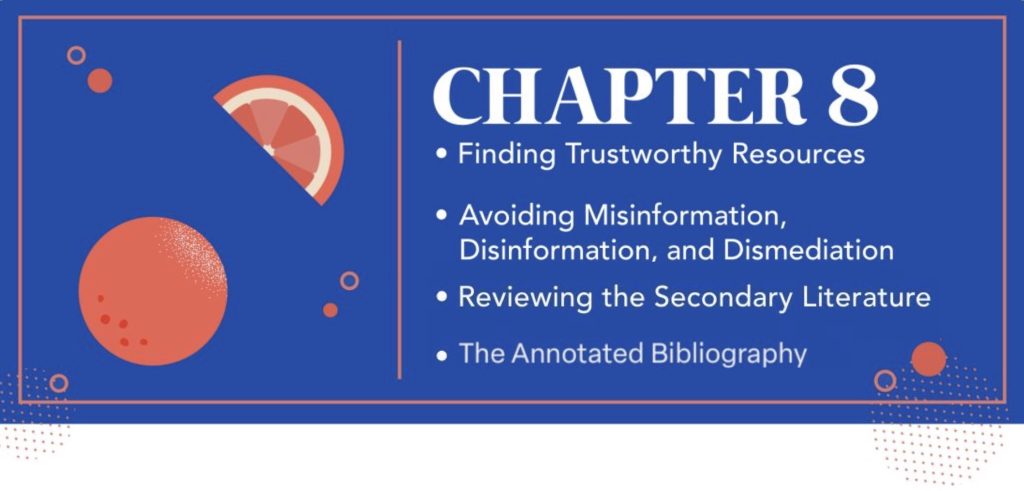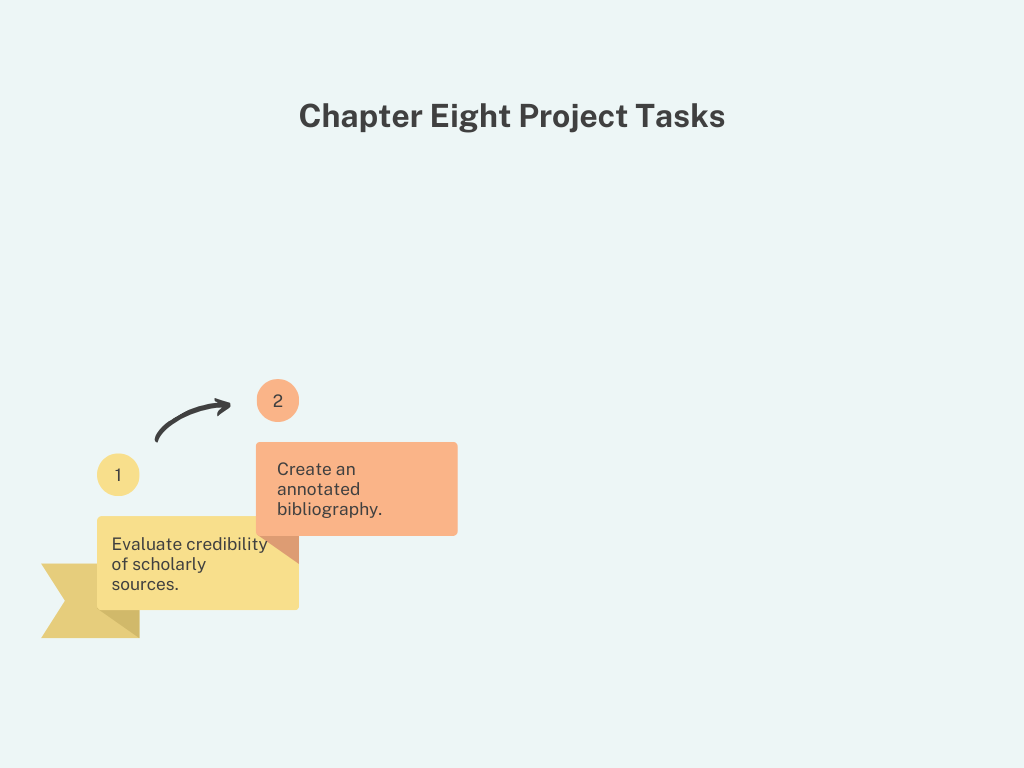Chapter 8 Objectives
Barry Mauer and John Venecek

Objectives
This chapter focuses on ways to select resources that are relevant, significant, and trustworthy. In other words, we need to address the issue of authority, which is the trust we grant to reliable sources of information. With so much misinformation and disinformation flooding our society, we need to be extremely careful. How do we handle the question of “bias”? Is it always a bad thing? How important is currency (the most recent information)?
Reviewing the Secondary Literature is an important section designed to demystify scholarly articles and books. Primary literature is a literary work or a report by someone with first-hand knowledge (such as the author of “Sonny’s Blues”). Secondary literature is any text that discusses the primary text. Secondary literature includes scholarly analyses, interpretations, criticisms, and other forms of commentary. Your research paper will include both primary and secondary sources. We focus on the concepts of thinking while reading, strategic skimming, active reading along with some valuable tips for note-taking.
The Annotated Bibliography section explains the purpose as well as the scope of your annotated bibliography. The annotated bibliography serves as a resources as you assemble your research project. Later you will synthesize these materials into a review of literature, which we will learn about in Chapter 10. The review of literature puts your research into a form that presents your argument clearly to your readers.
The project tasks for this chapter is to evaluate the credibility of the sources you found in the tasks for the previous two chapters and to write an annotated bibliography.

 Learning Objectives
Learning Objectives
Use this chapter to help you
- Evaluate which sources are most credible and why.
- Learn to select the best sources to establish your authority on your subject.
- Join the fight against misinformation and disinformation.
- Understand the process of annotating your scholarly sources. Later you will synthesize these annotations into a review of literature, which is a structured presentation of your research and how it relates to your research problem. By reading this chapter and responding to the related discussion prompts, you will learn to:
- understand the elements that go into an annotated bibliography and their relevance.
- develop skills for reading strategically and efficiently.
- identify current trends, niches, research gaps, and other opportunities to join the scholarly conversation to add your unique perspective.

